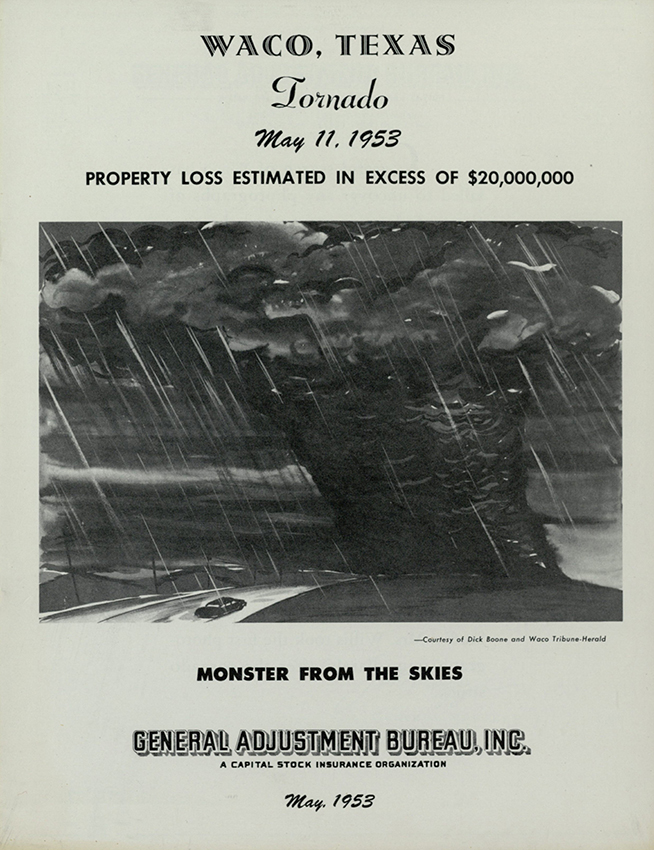By Geoff Hunt, Audio and Visual Curator

This week marks the 60th anniversary of the May 11, 1953, tornado that hit Waco, Texas, causing the deaths of 114 people. To honor those who lost their lives on this tragic day, and the great loss of a large part of Waco’s central business district, we have put on our Flickr page some unseen or seldom seen photographs of the affected areas of Waco, before and after this storm.
This group of images includes digitized 35mm, 4×5 and 8×10 photograph negatives, Kodachrome slides, stereo-slides, and printed photos, and features images captured by Waco photographers such as Hiram Blaine Sherrill, Randall W. Todd, Fred Marlar, and the Army Air Force Photography Division. We also included “before” photos, giving us a sense of what these stricken parts of Waco were like before the catastrophic storm.

Fred Gildersleeve, a well-known Waco photographer, also documented the storm’s wreckage. In a 1977 oral history interview, Waco historian Roger Conger remarked of Gildersleeve that “…Waco was most fortunate in having him here because he rode the crest of Waco’s remarkable development during the first twenty-five or thirty years of this century.” But sadly, just a few years prior to his death in 1958, he also saw the destruction of part of the city he had made a living photographing. He likely lost friends in the tragedy. However, like his earlier work, his documentation of the aftermath of the 1953 Waco Tornado helps to record an important part of the city’s history.

Another photographer whose work is being brought to light is Dr. Hannibal “Joe” Jaworski. He resided in the nearby Roosevelt Hotel (400 Austin Avenue) and had a medical practice on the third floor of the Amicable (ALICO) Building, on the corner of 5th and Austin. In the aftermath of the storm, he led medical care of the wounded at Waco’s Hillcrest Hospital. Jaworski previously served as a colonel in the U.S. Army Medical Corp, and so his experience earned during WWII made his contribution vital in helping those injured in this catastrophic natural disaster.

When going to some of these hard-hit areas now, all that remains are some empty lots and historical markers. However, there is nothing like a photograph taken during this time or just before to help us realize why this event was sometimes referred to as the “Monster from the Skies.”
Check out more before and after images of the 1953 Waco tornado in our Flickr slideshow. Click the arrow to make the slideshow start, and click the crosshairs in the bottom right corner to make the slideshow full-screen.
Discover more about the 1953 Waco tornado…
- Learn how The Texas Collection collaborated with the Dr Pepper Museum and other local cultural heritage organizations to commemorate the 1953 Waco tornado.
- Visit the Baylor Institute for Oral History to explore their many oral histories that discuss the tornado.
- Come research the tornado in our holdings at The Texas Collection.
- Read a blog post we wrote about the tornado last year, drawing from our archival materials.

